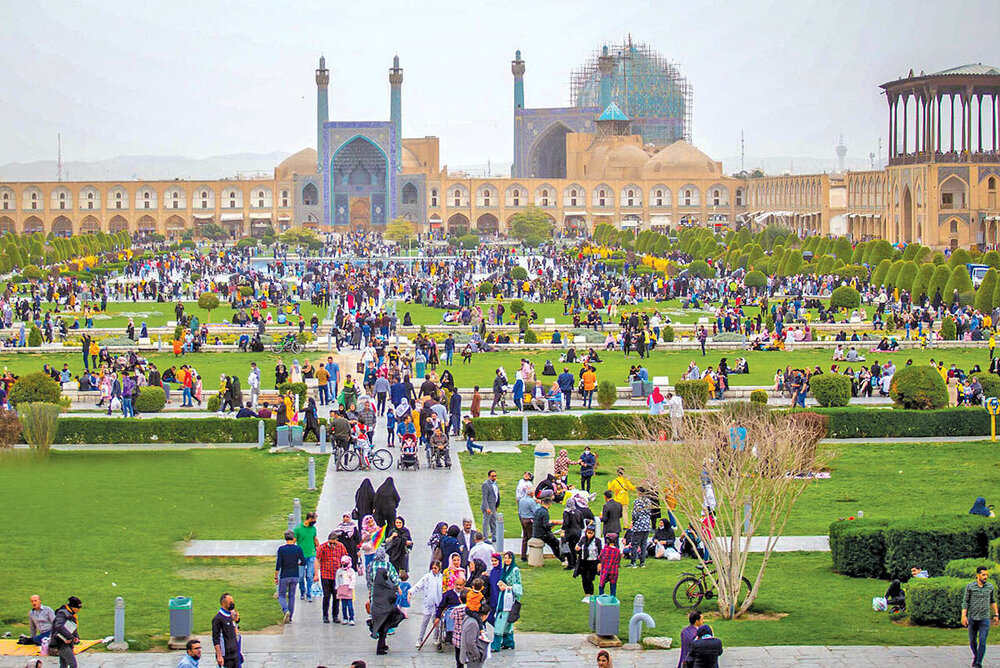Isfahan foreign tourist arrivals reach 35,000 in H1

TEHRAN—Isfahan’s foreign tourist arrivals hit 35,000 during the first half of the current Iranian calendar year, helping drive the tourism economy of the Iranian province after months of recession caused by the coronavirus.
“With the significant drop in the spread of the coronavirus disease and the resurgence of the tourism industry, according to the available statistics, from the beginning of Farvardin to the end of Shahrivar, 35,483 foreign tourists traveled to Isfahan province and stayed at least one night in Isfahan province,” the provincial tourism chief said on Tuesday.
Alireza Izadi said that according to available data the number of foreign visitors to Isfahan has jumped some 100 percent compared to the same period last year.
“Statistics indicate that 17,300 foreign tourists stayed in Isfahan province for at least one night during the 12 months of (the past Iranian year of) 1400 in which the fifth and sixth waves of the coronavirus occurred… The number of foreign arrivals in the province has jumped 100 percent year on year,” Izadi explained.
“Most of the foreign tourists who choose the beautiful province of Isfahan as their travel destination are from Germany, Italy, France, Austria, and then East Asia countries such as China, Singapore, and Japan, as well as Muslim-majority countries, especially the Persian Gulf littoral states,” the official said.
The capital city of Isfahan was once a crossroads of international trade and diplomacy in Iran and now it is one of Iran’s top tourist destinations for good reasons. The city has long been nicknamed as Nesf-e-Jahan, which is translated into “half the world”; meaning seeing it is relevant to see half the world.
Isfahan is filled with many architectural wonders, such as unmatched Islamic buildings, bazaars, museums, Persian gardens, and tree-lined boulevards. It's a city for walking, getting lost in its mazing bazaars, dozing in beautiful gardens, and meeting people. The ancient city is renowned not only for the abundance of great historical bridges but also for its ‘life-giving river’, the Zayandeh-Rood, which has long bestowed the city an original beauty and fertility.
They say the cool blue tiles of Isfahan's Islamic buildings, and the city's majestic bridges, contrast perfectly with the encircling hot, dry Iranian countryside. The huge Imam Square, best known as Naghsh-e Jahan Sq. (literary meaning “Image of the World”), is one of the largest in the world (500m by 160m), and a majestic example of town planning. Constructed in the early 17th century, the UNESCO-registered square is punctuated with the most interesting sights in Isfahan.
The massive square was laid out under the reign of the Safavid ruler, Shah Abbas the Great, to signal the importance of Isfahan as the capital of his powerful empire. It is hemmed on four sides by magnificent buildings: to the east, the Sheikh Lotfollah Mosque; to the west, the palace of Ali Qapu; to the north, the portico of Qeysarieh; and to the south, the eminent Imam Mosque.
In addition, modern Isfahan is now home to some heavy industry, including steel factories and a nuclear facility on its outskirts. However, its inner core wants to be preserved as a priceless gem. The city is also home to a gigantic, professional, and state-of-the-art healthcare city, which is a major destination in the realm of medical tourism.
AM
